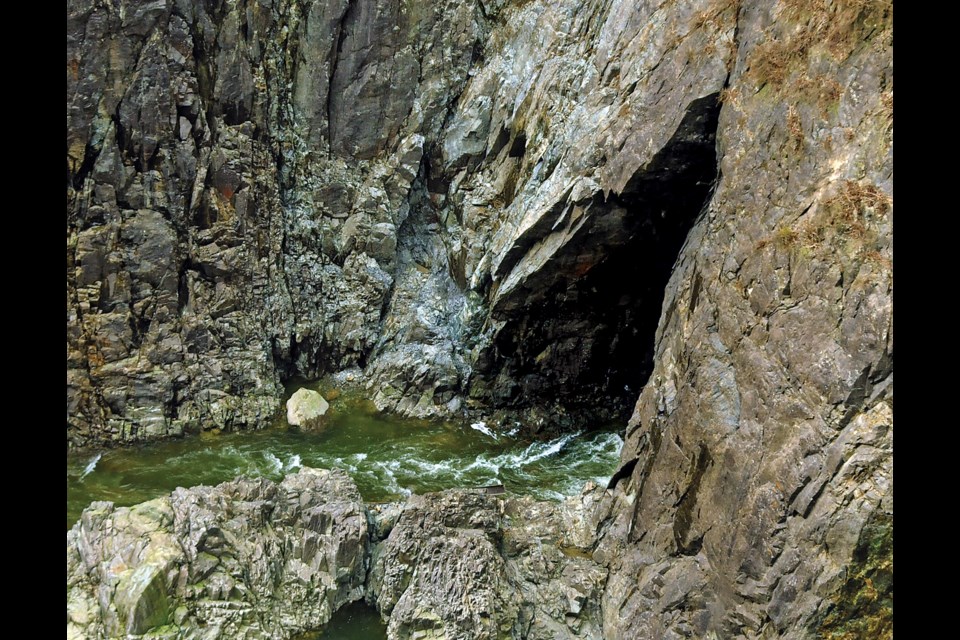If Bruce Wayne lived in Vancouver, you might expect to see the Batplane soar out of it.
Like the nearby phantom door in the rockface, a cave at Cleveland Dam has attracted the curiosity of Reddit users wondering what lurks inside.
Some speculated it could be a lair for a Bond villain, others said a Balrog. But a couple of commenters rightly pointed out that it’s actually a diversion tunnel for the Cleveland Dam.
You probably didn’t come here for a dam history lesson, but here’s one anyway.
When the North Vancouver dam was being built between 1952 and 1954, flows of the Capilano River were temporarily diverted through a tunnel excavated into the rock of the river canyon.
The tunnel is about 10 metres in diameter and 250 metres long, and has a concrete plug with two large pipes and valves to control water flow. When construction was completed, the diversion tunnel valves were closed, and the Capilano Reservoir was filled.
“The tunnel remains in place today with the entrance almost 90 metres below the full reservoir level, and continues to serve an important role in managing reservoir levels and flows to the downstream Capilano River,” said Ian Manning, senior engineer with Metro Vancouver Water Services.
“It is important to emphasize that the diversion tunnel is not open to public access,” he said.
Metro Vancouver – which owns and operates the dam – carries out regular surveillance, testing and maintenance while meeting or exceeding standards, Manning said. Provincial regulations require owners to ensure dams will withstand an extreme earthquake or flood.
Dam improvements
Cleveland Dam was built at an original cost of $10.7 million, with a number of upgrades in the years since. Those include a $3-million seismic upgrade in 1992, and a $25-million upgrade to the east abutment in 2001-02.
More recently, the dam was considered as a potential candidate for generating hydro power. A business case prepared in 2013 showed that it could power 6,000 homes. In 2018, Metro took a closer look at the potential $90-million project, as well as the less-likely candidate, Seymour Dam.
But a high-level analysis of hydropower generation and downstream fish passage completed in 2021 found a poor cost-benefit of these options, Manning said, adding that Metro would not be pursuing either.
“Metro Vancouver will continue to explore alternative electricity end uses, and investigate ways to further improve downstream fish passage at Cleveland Dam,” he said.
The dam has also recently undergone a series of safety enhancements. In 2020, tragedy struck when the main spillway was opened, accidentally causing a sudden rush of water that swept away a North Vancouver man and his son. The man’s body was later recovered. At the time, North Vancouver RCMP said the second person was still missing.
A review concluded that the cause was human error related to programming of the control system for the spillway gate.
Following the disaster, a plan for public safety enhancements was put in motion, which included the installation of an alarm system in 2021. A new dam safety educational program was slated to come into effect this spring.
Last September, a couple who were also swept away by the deluge but survived sued Metro Vancouver for negligence.




